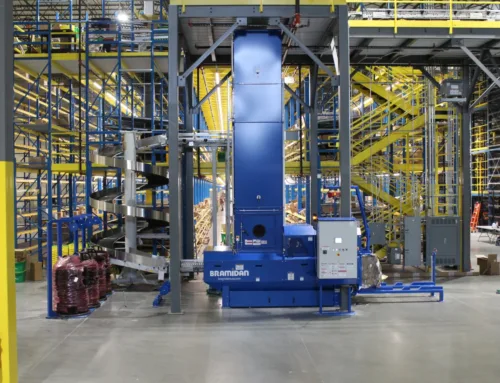
Navigating the commercial liquidation process can be overwhelming for many businesses facing financial challenges. Understanding the key steps involved is essential for maximizing asset recovery and ensuring a smooth transition. This article will cover critical aspects such as assessing your company’s financial health, selecting the appropriate liquidation method, and the importance of appointing a licensed insolvency practitioner. By engaging with this content, readers will gain valuable insights into effective commercial liquidation services, helping them address their specific pain points and streamline their liquidation process with the support of End2End Logix and strategic partnerships.
Understanding Commercial Liquidation

Commercial liquidation refers to the process of selling a business’s assets to pay off creditors, often due to financial distress. Understanding the different types of liquidation, such as voluntary and involuntary, is essential for businesses. Additionally, legal implications, including jurisdiction and tax return considerations, play a critical role in ensuring compliance and avoiding fraud through strategic partnerships. This section will explore these key aspects in detail with the support of commercial liquidation services.
Definition and Purpose of Liquidation
Liquidation is the process of selling a business’s assets through commercial liquidation services and end2end logix to settle debts, particularly when facing financial difficulties. This option serves to minimize risk for stakeholders, including secured creditors, by converting assets into cash to fulfill outstanding obligations. Understanding the accounting implications and potential for restructuring during liquidation is vital for businesses to navigate this challenging phase effectively. Strategic partnerships play a crucial role in facilitating a smooth liquidation process.
- Definition of liquidation as a process for settling debts.
- Importance of minimizing risk for stakeholders.
- Role of secured creditors in the liquidation process.
- Accounting implications and restructuring opportunities.
Different Types of Liquidation
Different types of liquidation include voluntary and involuntary liquidation, each serving distinct purposes and processes. Voluntary liquidation occurs when a business decides to cease operations, often due to financial difficulties, while involuntary liquidation is initiated by creditors through legal action. Understanding these types is crucial for businesses, as they can impact expenses, fees, and the overall approach to asset recovery, especially under the guidelines set by the Australian Securities and Investments Commission.
Legal Implications for Businesses
Legal implications for businesses undergoing liquidation are significant and multifaceted. Engaging a licensed insolvency practitioner, such as a liquidator, is essential to ensure compliance with regulations and proper handling of the process. Businesses must also be aware of their obligations to report income and maintain accurate records, as failure to do so can lead to complications with the companies house register and potential legal repercussions for the debtor.
Liquidation is a path many must walk, but understanding it is just the beginning. Next, assessing your company’s financial health will reveal the true landscape of your business and guide your next steps.
Assessing Your Company’s Financial Health

Assessing a corporation’s financial health is crucial for stakeholders considering liquidation. This involves identifying signs of financial distress, evaluating assets and liabilities, and consulting with financial advisors. Understanding equity positions, outstanding business loans, and bond obligations provides clarity on the company’s situation, guiding informed decisions throughout the liquidation process.
Identifying Signs of Financial Distress
Identifying signs of financial distress is essential for small businesses considering liquidation. Common indicators include declining sales, increasing debt levels, and cash flow problems, which can significantly impact the company’s valuation. Engaging in credit counseling can provide valuable insights into managing these challenges, helping businesses assess the worth of their intellectual property and other assets to determine an appropriate price for liquidation.
Evaluating Assets and Liabilities
Evaluating assets and liabilities is a critical step for businesses facing insolvency, as it provides a clear picture of financial health. Utilizing accounting software can streamline this process, allowing for accurate tracking of assets such as inventory, equipment, and receivables, while also assessing liabilities including loans and outstanding debts. Understanding these financial elements is essential, especially when preparing for potential court proceedings, as it helps stakeholders gauge their interests and obligations under the law.
Consulting With Financial Advisors
Consulting with financial advisors is a critical step for businesses navigating the commercial liquidation process. These professionals can provide insights into determining the market value of assets, which is essential for setting appropriate auction prices. Additionally, they can assist in understanding the implications of corporate tax obligations and wage liabilities, ensuring that all financial aspects are addressed comprehensively.
- Identify the need for professional guidance.
- Determine the market value of assets.
- Understand corporate tax obligations.
- Evaluate wage liabilities.
- Set appropriate auction prices for liquidation.
Understanding your company’s financial health is just the beginning. Now, it’s time to explore the best ways to recover value and move forward.
Selecting the Appropriate Liquidation Method

Selecting the appropriate liquidation method is crucial for businesses facing financial challenges. This section will explain voluntary liquidation, where a company opts to cease operations, and involuntary liquidation, initiated by creditors. Factors influencing this choice include the nature of unsecured debt, existing mortgage obligations, security interests, and ownership structures, all of which impact the overall liquidation strategy.
Voluntary Liquidation Explained
Voluntary liquidation occurs when a business decides to cease operations, often as a strategic move to manage financial difficulties. Engaging an insolvency practitioner is essential in this process, as they provide guidance on avoiding wrongful trading and ensure compliance with legal obligations. This method allows businesses to leverage their remaining assets for debt relief, minimizing losses while addressing outstanding liabilities effectively.
- Understanding voluntary liquidation as a strategic decision.
- The role of an insolvency practitioner in the process.
- Avoiding wrongful trading and legal complications.
- Leveraging assets for effective debt relief.
Involuntary Liquidation Processes
Involuntary liquidation processes are initiated by creditors when a business is unable to meet its financial obligations, often due to poor cash flow or mounting debt. This method can significantly impact shareholders, as it typically involves the sale of company property to settle outstanding debts. Engaging with a qualified insolvency practitioner is essential during this process, as they can help navigate the complexities of debt settlement and ensure compliance with legal requirements, ultimately protecting the interests of all parties involved.
Factors Influencing the Choice of Liquidation
Several factors influence the choice of liquidation method for businesses facing financial distress. Diligence in assessing the nature of debts is crucial; distinguishing between unsecured creditors and preferential creditors can significantly impact the liquidation strategy. For instance, businesses may consider discounting certain assets to expedite the process, ensuring that they can address outstanding obligations while maximizing recovery for stakeholders.
Choosing the right liquidation method is just the beginning. Next, it’s time to consider the role of a licensed insolvency practitioner, whose expertise can guide the process with precision.
Appointing a Licensed Insolvency Practitioner

Appointing a licensed insolvency practitioner is a critical step in the company liquidation process. These professionals serve as trustees, guiding businesses through the complexities of debt management and asset recovery. Key considerations include understanding their roles and responsibilities, evaluating criteria for choosing a qualified professional, and being aware of the costs involved in the audit process. Each of these aspects plays a vital role in ensuring a smooth liquidation experience.
Roles and Responsibilities of Insolvency Practitioners
Insolvency practitioners play a crucial role in the commercial liquidation process, acting as trusted advisors to businesses facing financial challenges. Their responsibilities include assessing the fair market value of assets, managing inventory, and developing an effective exit strategy that maximizes cash recovery for stakeholders. By providing expert guidance on refinancing options and ensuring compliance with legal requirements, these professionals help businesses navigate the complexities of liquidation while protecting the interests of all parties involved:
- Assessing the fair market value of assets.
- Managing inventory effectively during liquidation.
- Developing an exit strategy to maximize cash recovery.
- Providing guidance on refinancing options.
- Ensuring compliance with legal requirements.
Criteria for Choosing a Qualified Professional
Choosing a qualified insolvency practitioner is essential for businesses navigating the commercial liquidation process. Key criteria include verifying their credentials, such as licensing and experience in handling similar cases, which ensures they understand the complexities of liability and asset recovery. Additionally, assessing their reputation through client testimonials and industry references can provide insights into their effectiveness and reliability in managing liquidation processes.
- Verify credentials and licensing.
- Assess experience with similar cases.
- Evaluate reputation through testimonials.
- Understand their approach to managing liability.
- Consider their communication style and support.
Understanding the Costs Involved
Understanding the costs involved in appointing a licensed insolvency practitioner is essential for businesses navigating the commercial liquidation process. These costs can vary significantly based on the complexity of the case, the size of the business, and the specific services required. Businesses should anticipate fees related to the practitioner’s time, administrative expenses, and any additional costs associated with asset valuation and management, ensuring they budget accordingly to avoid unexpected financial strain:
- Assess the complexity of the liquidation case.
- Consider the size of the business and its assets.
- Account for fees related to the practitioner’s time and services.
- Include administrative expenses in the budget.
- Plan for additional costs associated with asset valuation and management.
With a licensed insolvency practitioner at the helm, the path ahead becomes clearer. Now, it’s time to navigate the liquidation process step by step, ensuring every move is deliberate and effective.
Navigating the Liquidation Process Step by Step

Navigating the commercial liquidation process involves several critical steps to ensure a smooth transition. This includes preparing necessary documentation, notifying creditors and stakeholders, selling assets to pay off debts, distributing remaining funds, and completing legal requirements for closure. Each of these steps is essential for maximizing asset recovery and ensuring compliance with legal obligations, providing businesses with a clear path through liquidation.
Preparing Necessary Documentation
Preparing necessary documentation is a critical step in the commercial liquidation process, as it ensures that all relevant information is organized and accessible. This includes financial statements, asset inventories, and creditor lists, which are essential for transparency and compliance with legal requirements. By meticulously gathering and reviewing these documents, businesses can facilitate a smoother liquidation process and enhance the potential for maximizing asset recovery:
- Gather financial statements and reports.
- Compile a comprehensive inventory of assets.
- List all creditors and outstanding obligations.
- Ensure compliance with legal documentation requirements.
- Review and organize all relevant paperwork for easy access.
Notifying Creditors and Stakeholders
Notifying creditors and stakeholders is a critical step in the commercial liquidation process, as it ensures transparency and compliance with legal obligations. Businesses must communicate their intent to liquidate, providing clear information about the timeline and the implications for outstanding debts. This proactive approach not only helps maintain trust with creditors but also facilitates a smoother transition, allowing for better asset recovery and minimizing potential disputes during the liquidation process.
Selling Assets to Pay Off Debts
Selling assets to pay off debts is a critical step in the commercial liquidation process, as it directly impacts the ability to settle outstanding obligations. Businesses should prioritize identifying high-value assets that can be liquidated quickly to maximize cash recovery. Engaging with experienced professionals can facilitate effective sales strategies, ensuring that assets are sold at competitive prices while adhering to legal requirements.
- Prepare necessary documentation.
- Notify creditors and stakeholders.
- Sell assets to pay off debts.
- Distribute remaining funds.
- Complete legal requirements for closure.
Distributing Remaining Funds
Distributing remaining funds during the commercial liquidation process is a critical step that directly impacts stakeholders. After selling assets and settling outstanding debts, any remaining funds must be allocated according to legal priorities, ensuring that secured creditors are paid first, followed by unsecured creditors. This careful distribution not only adheres to legal requirements but also helps maintain trust among creditors, ultimately facilitating a smoother liquidation experience and maximizing recovery for all parties involved.
Completing Legal Requirements for Closure
Completing legal requirements for closure is a vital step in the commercial liquidation process, ensuring that all obligations are met and the business is formally dissolved. This involves filing necessary documents with regulatory bodies, such as the companies house register, to confirm the liquidation and protect against future liabilities. Engaging a licensed insolvency practitioner can provide essential guidance in navigating these legalities, helping businesses avoid potential pitfalls and ensuring compliance with all relevant laws.
The end of the liquidation process marks a new beginning. As businesses close one chapter, they must prepare to embrace the opportunities that lie ahead.
Moving Forward After Liquidation

Moving forward after liquidation involves addressing personal liabilities, exploring future business opportunities, and rebuilding financial stability. It is essential for individuals and businesses to reflect on lessons learned from the liquidation process. Each of these aspects provides valuable insights that can guide stakeholders in making informed decisions and establishing a solid foundation for future endeavors.
Addressing Personal Liabilities
Addressing personal liabilities after liquidation is a critical step for individuals involved in the process. It is essential to understand any personal guarantees made for business debts, as these can lead to personal financial repercussions. Consulting with a financial advisor can help individuals navigate their obligations and develop a plan to manage any outstanding liabilities effectively:
- Understand personal guarantees related to business debts.
- Consult with a financial advisor for guidance.
- Develop a plan to manage outstanding liabilities.
Exploring Future Business Opportunities
After experiencing liquidation, businesses have the opportunity to explore new ventures and redefine their market presence. This phase allows stakeholders to assess their strengths and weaknesses, enabling them to pivot towards more sustainable business models. By leveraging lessons learned from past challenges, companies can identify emerging market trends and align their strategies accordingly, ultimately fostering resilience and growth in future endeavors.
Rebuilding Financial Stability
Rebuilding financial stability after liquidation requires a strategic approach to managing personal and business finances. Individuals should assess their current financial situation, including any outstanding debts and personal guarantees, to create a realistic plan for recovery. Engaging with financial advisors can provide tailored strategies for budgeting, saving, and exploring new business opportunities, ultimately guiding stakeholders toward a more secure financial future.
Lessons Learned From the Liquidation Process
Lessons learned from the liquidation process can significantly shape future business strategies and decision-making. Stakeholders often realize the importance of proactive financial management and the need for regular assessments of their company’s financial health. By reflecting on the challenges faced during liquidation, businesses can identify key areas for improvement, such as better cash flow management and more effective communication with creditors, ultimately fostering resilience and enhancing their ability to navigate future financial difficulties.
Conclusion
Navigating the commercial liquidation process involves critical steps that ensure compliance and maximize asset recovery. Preparing necessary documentation, notifying creditors, and effectively selling assets are essential actions that directly impact the outcome of liquidation. Engaging a licensed insolvency practitioner provides valuable expertise, guiding businesses through legal complexities and protecting stakeholder interests. By understanding and executing these key steps, businesses can transition smoothly through liquidation, ultimately positioning themselves for future opportunities and financial stability.
Share This Story, Choose Your Platform!
Get In Touch
Phone: (847) 722-6942
Email: sales@end2endlogix.com
Web: end2endlogix.com


